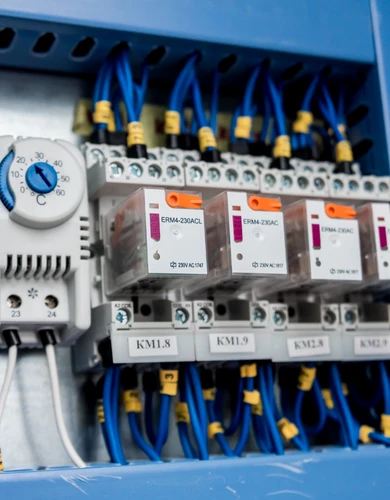New business gas connection
Despite innovations in electrical heat pump systems, the cheapest and most reliable way to heat properties remains to supply natural gas to a boiler.
Most commercial properties in Britain are close enough to a gas main to arrange a new gas supply connection.
This guide offers a step-by-step overview of arranging a new business gas connection for a commercial property in Britain.
💡If your property already has a gas supply but you need to replace or relocate your meter, use our guide on business gas meter installation.
A new business gas connection guide
In our step-by-step guide below, you’ll see that new gas connections require coordination between your local gas grid operator and a business energy supplier.
We recommend considering engaging a specialist utilities provider who can oversee the work and project manage the different parties involved.
The advantage of using a specialist is that they can develop a coherent plan for your water and business electricity connections to minimise groundwork.
Below, we’ve summarised the five essential steps for arranging a business gas connection:
- Step 1: Review of technical requirements.
- Step 2: Get a quotation from the local gas distribution network operator.
- Step 3: Receive a Meter Point Reference Number.
- Step 4: Appoint a business gas supplier.
- Step 5: Physically connect your property to the local gas network.
The time and costs to complete a business gas connection depend on your required gas capacity and the distance between your property and existing gas infrastructure.
Review of technical requirements
The first step in arranging a business gas connection is understanding your property’s gas supply requirements.
Here’s a list of technical requirements you need to know in advance about your business gas connection:
- Annual gas load – The amount of gas you expect your property to consume annually, measured in kWh.
- Peak hourly load – The maximum flow of gas your business will require in a single hour. Peak hourly load is measured in cubic metres per hour.
- Meter location – Determine the desired location of your business gas meter in your property plan.
- Previous gas connections – Determine whether your property has ever had a gas connection.
Get a quotation from your local gas distribution network operator
Business gas connections are usually installed by the local gas distribution operator responsible for the gas infrastructure in your region.
In Britain, there are four different gas distribution operators. You can identify the one serving your area and find their contact details on the Energy Networks website.
Each operator’s website includes a form to request a new commercial gas connection. On the form, you can choose whether you want the operator to:
- Lay gas pipes up to the shut-off valve at your property’s boundary or
- Lay gas pipes directly to your gas meter location.
After you complete the form, the grid operator/independent gas transporter will provide a quote for connecting your property to the gas grid. The quote will include a connection plan, estimated costs, and a timeline for the work.
Receive a Meter Point Reference Number
Once you accept the connection quotation offered by your gas distribution network operator, they will issue your commercial property with a Meter Point Reference Number (MPRN).
An MPRN is a unique identifier for your property’s gas connection, allowing you to appoint a business gas supplier for your new connection.
Appoint a business gas supplier
The next step is to appoint a licensed business gas supplier and sign up for a new business energy contract for the gas you will receive from your new connection.
You’ll need to ask your new supplier for a business gas meter installation at your property and to activate the gas supply once the connection work is complete.
Our business energy experts have helped thousands of companies find the cheapest business gas prices. Use our business energy comparison service today to quickly find the best deals available.
Once the connection is established, your new supplier will begin issuing business gas bills.
Physically connect your property to the local gas network
Arranging the new pipes required to connect your commercial property involves groundwork for the new supply pipes to your property.
The physical connection work encompasses several crucial steps:
- Engineers will dig trenches where needed to lay the gas pipes from the main supply to your property.
- Pipes are laid securely in the trenches, ensuring they follow safety regulations and are appropriately insulated and protected.
- The new pipes are connected to the local gas network infrastructure.
- Any necessary pressure tests are conducted to ensure the integrity of the connection.
- The engineers will backfill the trenches and restore the ground as much as possible.
Once the physical business gas installation has been completed, a Gas Safe registered engineer from your gas supplier will:
- Install your business gas meter.
- Activate your gas flow.
- Perform a safety check.
- Issue a gas safety certificate.

